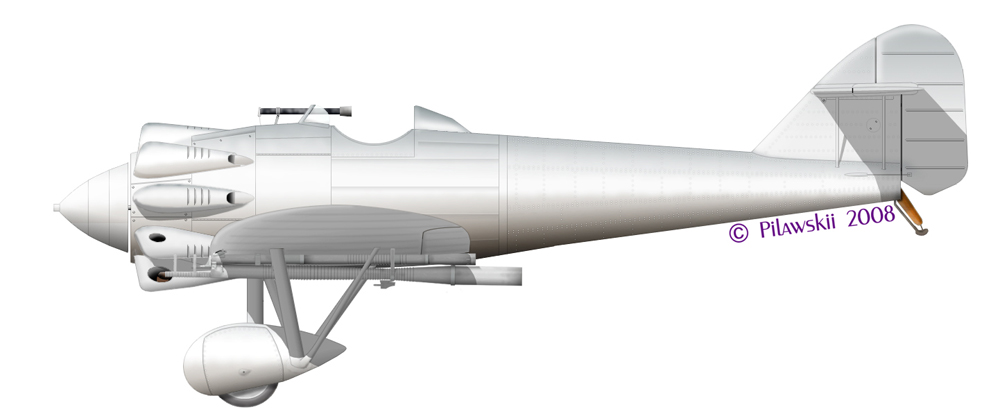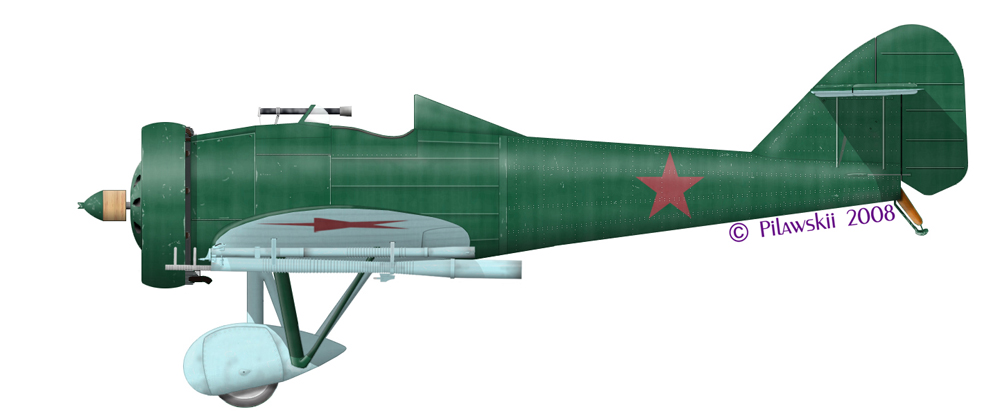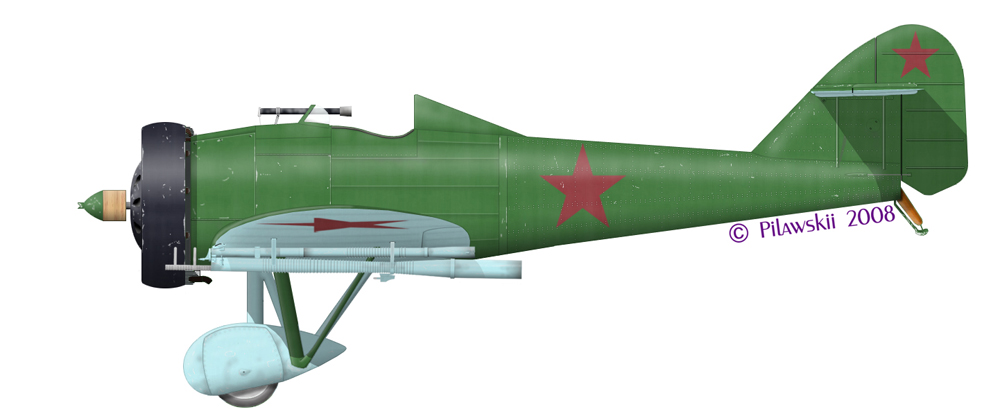
The TsKB-7 no.1 prototype as completed in June/July 1931, finished in some kind
of aluminium dope (exact type unknown)

I-Z p/n 39010 under investigation by the NII VVS at Schelkovo, 1933. This aircraft
featured the outer placement of the APK-4 gun, as seen on the usual production
examples (p/n 39009 seems to have been the last with the inboard arrangement).
As with virtually all aircraft produced at
Zavod
39, the finish in view looks to have been AEh-15 upper surfaces, and
likely AEh-4 below.






